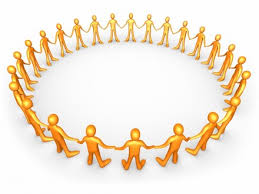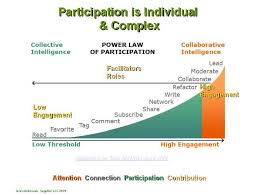 I love the Nonprofit Blog Carnival because it is an online collaborative space where bloggers can focus on a specific nonprofit theme and readers can easily access different points of view on the same topic. I am very honored and humbled that the DonorDreams blog will host the May Nonprofit Blog Carnival.
I love the Nonprofit Blog Carnival because it is an online collaborative space where bloggers can focus on a specific nonprofit theme and readers can easily access different points of view on the same topic. I am very honored and humbled that the DonorDreams blog will host the May Nonprofit Blog Carnival.
Let’s get this party started with the immortal words of Dr. Seuss from “Oh, the Places You’ll Go!“:
Congratulations!
Today is your day.
You’re off to Great Places!
You’re off and away!You have brains in your head.
You have feet in your shoes.
You can steer yourself
any direction you choose.
Attention all bloggers: Calling for submissions to the May 2013 Nonprofit Blog Carnival
The theme for May’s Nonprofit Blog Carnival is . . .
“Dear Board volunteers . . .”
If you could write an anonymous letter to a nonprofit board about something they do that drives you crazy, what would that letter look like and what suggested solutions would you include?

I encourage you to have a little fun with this topic. You can write it from any of the following perspectives:
- executive director
- fundraising professional
- fellow board member
- nonprofit consultant
- donor
- volunteer
- program staff
You can also theme your letter on any number of issues pertaining to: fundraising, board development, leadership, financial management, planning, organizational culture, volunteerism, etc. The possibilities really are endless!
And remember to keep the letter “anonymous” just like the Mardi Gras carnival!
Go visit April’s Nonprofit Blog Carnival hosted by Katya’s Non-Profit Marketing Blog
In April, the carnival was hosted by Katya’s Non-Profit Marketing Blog and the theme was “Best Advice“. She asked bloggers to consider the following questions:
- How has it transformed your work?
- What is your own best single piece of advice for people who work at nonprofits?
If you’re interested in reading what some very smart and talented bloggers had to say about this Nonprofit Blog Carnival theme, click here.
But wait . . . there’s more!
If you couldn’t tell from my introduction, one of my favorite writers is Dr. Seuss, and he has been described by many as an “architect of social change“. In my opinion, the genius behind his writing is that he talked about social issues in a way that even a child could understand.
So, those of you who can incorporate some reference or tip of your hat to Dr. Seuss in your Nonprofit Blog Carnival submission for May will get bonus points.
It can be as simple as incorporating a quote or a moral to one of his stories into your anonymous letter to nonprofit board volunteers. Or it can be as complex as composing your entire letter in a Seuss-like format.
 I’ll even help by providing you with these online resources and ideas:
I’ll even help by providing you with these online resources and ideas:
- 30 Dr. Seuss Quotes That Can Change Your Life
- Seussville
- Wikipedia: Dr. Seuss
- How to write like Dr. Seuss
What exactly do bonus points get you? Simply put, it increases the chances that your blog post will get included in the Nonprofit Blog Carnival in May, which will be published on the DonorDreams blog platform on Wednesday, May 29th.
Finally, if you choose to accept the Seuss-challenge, be careful about copyrights, trademarks, and all of that legal stuff.
How to submit your work for consideration?
You are welcome to write your blog in a house or with a mouse or in a box or with a fox; however, I must receive your submission by the end of the day on Monday, May 27, 2013:
How do you submit? Simply email the following information to nonprofitcarnival[at]gmail[dot]com:
- Your name.
- The name of your blog.
- The permalink of your post.
Who will make the decision on what gets included?
During the entire month of May, I’m turning the DonorDreams blog over to the Nonprofit Blog Carnival theme of “Dear Board Volunteers . . .”
In the last few weeks, I’ve invited a ton of executive directors, fundraising professionals, board volunteers, and nonprofit consultants to do the same thing that I’ve invited you to do, which is write an anonymous letter with some advice in it to their nonprofit board volunteers. Of course, I didn’t ask them to get creative with the Dr. Seuss curveball because they aren’t creative bloggers like you! 😉
I am publishing their work at DonorDreams throughout the month of May. (If you are looking for some inspiration, I encourage you to periodically click over to DonorDreams. Something you read may just spark a blog post for you.)
I will ask those nonprofit professionals and volunteers who get published at DonorDreams in May to help me judge what you and other bloggers submit at nonprofitcarnival[at]gmail[dot]com. Remember, the big carnival celebration happens on Wednesday, May 29th.
Miscellaneous details?
Click here to learn more about the Nonprofit Blog Carnival. If you want to view the archives, then you want to click here.
Do you want to become a “Friend of the Carnival” and receive email blasts twice a month with reminders about the Carnival? Click here if you want to receive those reminders.
Here’s your final piece of Seuss-inspiration: “You’re on your own. And you know what you know. And YOU are the one who’ll decide where to go . . .”
I am very much looking forward to see what you decide to do and where you decide to take this month’s Nonprofit Blog Carnival.
Here’s to your health!
Erik Anderson
Founder & President, The Healthy Non-Profit LLC
www.thehealthynonprofit.com
erik@thehealthynonprofit.com
http://twitter.com/#!/eanderson847
http://www.facebook.com/eanderson847
http://www.linkedin.com/in/erikanderson847





















